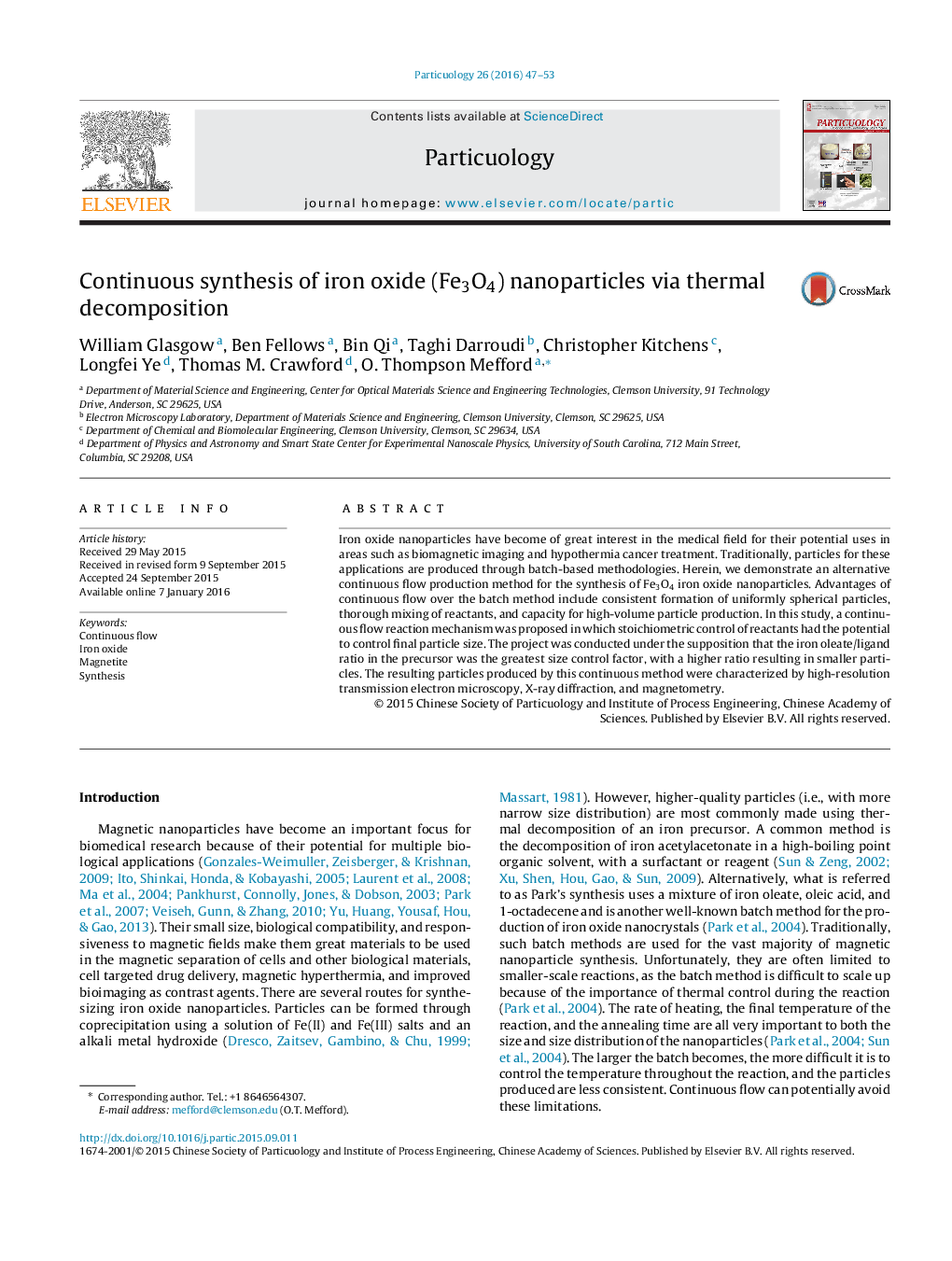| Article ID | Journal | Published Year | Pages | File Type |
|---|---|---|---|---|
| 671725 | Particuology | 2016 | 7 Pages |
•A continuous flow thermal decomposition method for producing iron oxide nanoparticles was studied.•Iron oxide nanoparticles produced in the continuous flow reactor were crystalline.•Iron oleate/oleic acid molar ratio was the key factor in deciding particle size in this process.•A continuous flow reaction mechanism was proposed.
Iron oxide nanoparticles have become of great interest in the medical field for their potential uses in areas such as biomagnetic imaging and hypothermia cancer treatment. Traditionally, particles for these applications are produced through batch-based methodologies. Herein, we demonstrate an alternative continuous flow production method for the synthesis of Fe3O4 iron oxide nanoparticles. Advantages of continuous flow over the batch method include consistent formation of uniformly spherical particles, thorough mixing of reactants, and capacity for high-volume particle production. In this study, a continuous flow reaction mechanism was proposed in which stoichiometric control of reactants had the potential to control final particle size. The project was conducted under the supposition that the iron oleate/ligand ratio in the precursor was the greatest size control factor, with a higher ratio resulting in smaller particles. The resulting particles produced by this continuous method were characterized by high-resolution transmission electron microscopy, X-ray diffraction, and magnetometry.
Graphical abstractFigure optionsDownload full-size imageDownload as PowerPoint slide
